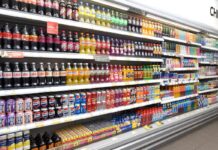Industry experts reveal impact of inflation on consumers

PERSISTENTLY high food and drink inflation is causing massive consumer anxiety and has affected shopping habits, according to industry experts.
The Office for National Statistics has reported that food and non-alcoholic drinks inflation sat at 18.3% for the year to the end of May – only 0.7% down from April. The headline rate remained unmoved at 8.7%.
Food and Drink Federation Scotland chief David Thomson said: “We know how concerned households remain about the costs of their weekly shop, and food and drink manufacturers are continuing to drive down costs wherever they can.
“However, the cost of ingredients, energy, labour, packaging, logistics and other inputs remain stubbornly high.”
Meanwhile, Kantar said grocery price inflation was 16.5% for the four weeks to 11 June – the lowest level this year but still the sixth highest monthly figure since 2008.
Fraser McKevitt, head of retail and consumer insight at Kantar, cited data that showed nearly 70% of households were either “extremely” or “very worried” about food and drink inflation.
He said: “Of the top five financial worries that consumers have, rising grocery prices is the only one they are more concerned about now than at the start of the year.”
Reporting that many savvy shoppers were switching to cheapest own-label lines, he added: “Total spending on these value ranges has rocketed by 41% compared to last year.”
A survey by Food Standards Scotland also found nearly two-thirds of Scottish adults had changed their shopping habits because of financial worries.
Just over a fifth were buying less fresh fruit and vegetables and almost three-fifths had swapped to cheaper or unbranded products, getting more on promotion and buying fewer treat foods.
Ewan MacDonald-Russell, of the Scottish Retail Consortium, reported that food sales had risen by 16.2% in May versus the same time in 2022 – but said that was driven by inflation.
He added: “It’s clear consumers are waiting until items are essential before making purchases and that there is very little discretionary spending available.”


















